Being a car owner comes with responsibilities, and one of the most important is proactive maintenance. Understanding the key mechanical parts of your car empowers you to make informed decisions when repairs are needed. It’s crucial to know which parts, if malfunctioning, can be dangerous and which are relatively inexpensive to maintain. This guide, brought to you by carparteu.com’s auto repair experts, will help you navigate the complex world of car anatomy.
Understanding car parts names and functions is essential for vehicle maintenance and cost management.
Let’s delve into the inner workings of your vehicle, exploring everything from pistons to spark plugs, and identify the key components that make up the anatomy of a car.
Decoding Engine Components: Key Parts to Name
Maintaining your engine is crucial for preserving your car’s value and keeping running costs down.
The engine is the heart of your car, and understanding its components is vital. Let’s explore some key engine parts to name.
Cylinder Block and Pistons: The Powerhouse Duo
At the core of the engine lies the cylinder block, a robust structure that serves as the engine’s foundation. Within it are individual cylinders, hollow tubes where controlled combustion takes place. These cylinders are where the magic of power generation begins.
Inside these cylinders, pistons, secured by piston rings, move up and down. This movement is critical as it converts the explosive energy from combustion into the driving force that propels your vehicle forward. The piston-cylinder interaction is the primary mechanism for generating automotive power.
Crankshaft and Camshaft: Orchestrating Motion and Timing
Deep within the engine’s workings are the crankshaft and camshaft. The crankshaft is a crucial rotating component that transforms the linear, up-and-down motion of the pistons into rotational energy, providing the driving force for the wheels. Think of it as the engine’s main output shaft.
Simultaneously, the camshaft meticulously controls the timing of valve openings. These valves regulate the intake of air and fuel and the exhaust of gases, ensuring that combustion happens at precisely the right moment. The synchronized dance of the crankshaft and camshaft ensures smooth and propulsive motion of your car.
Intake and Exhaust Manifolds: The Breathing System
Imagine the intake and exhaust manifolds as the lungs of your car, managing the vital flow of air. The intake manifold draws in fresh air, rich in oxygen, essential for the combustion process within the engine. It’s the pathway for air to enter the engine.
Conversely, the exhaust manifold expels spent gases after combustion, directing them out through the exhaust system. This process ensures the engine efficiently gets rid of waste products. Together, these manifolds optimize engine performance by balancing power and efficiency. It’s important to note that electric vehicles do not have intake and exhaust manifolds, as they operate without internal combustion.
Powertrain and Gearboxes: Understanding Transmission Parts Names
The gearbox, a vital part of a manual car, requires smooth operation and careful maintenance.
The powertrain and gearbox are essential for transmitting engine power to the wheels. Let’s identify different gearbox types and related components.
Different Types of Gearboxes: Transmission Systems Explained
Gearboxes, also known as transmissions, come in various forms, each with unique characteristics.
Manual Gearboxes: Driver Control at Your Fingertips
Manual gearboxes give the driver complete control over gear selection. These systems require the driver to manually engage and disengage gears using a clutch pedal and gear stick. This allows drivers to adapt to diverse driving conditions, such as slippery roads, acceleration needs, and deceleration situations, by selecting the optimal gear for each scenario.
Automatic Gearboxes: Seamless Shifting for Ease of Driving
Automatic gearboxes simplify driving by automatically shifting gears without driver intervention. This eliminates the need for a clutch pedal or manual gear shifting. Inside an automatic gearbox, a torque converter, a type of fluid coupling, smoothly manages gear changes, resulting in a more relaxed driving experience.
CVTs: Continuously Variable Transmissions – The Modern Approach
Continuously Variable Transmissions (CVTs) represent the most advanced type of gearbox technology. Using a system of pulleys and belts, CVTs provide an infinite range of gear ratios. This results in seamless and continuous acceleration, without the stepped gear changes of traditional gearboxes. CVTs are known for optimizing fuel efficiency and dynamically adapting to changing driving conditions.
Differential and Driveshaft: Distributing Power to the Wheels
Within a car’s power system, the differential and driveshaft collaborate to ensure power reaches the wheels effectively. The driveshaft acts as a conduit, carrying power from the transmission to the wheels. It’s the rotating shaft that transfers engine torque.
The differential plays a crucial role in distributing power evenly to the wheels, particularly when turning. It allows the outer wheels to rotate faster than the inner wheels during a turn, preventing wheel slippage and ensuring smooth cornering. Together, they create a harmonious system for your car’s motion and maneuverability.
Clutch and Torque Converter: Engaging and Transferring Power
In the realm of gears and transmission, the clutch and torque converter are key components. In manual transmissions, the clutch enables the driver to engage and disengage the engine from the gearbox, allowing for gear changes and precise control over power delivery. It momentarily disconnects the engine from the transmission.
In automatic transmissions, the torque converter smoothly transfers power from the engine to the transmission without a direct mechanical link. This fluid coupling allows for smooth gear shifts and prevents engine stalling, making driving smoother and more dynamic.
Fuel and Ignition Systems: Ensuring Combustion
A properly functioning fuel system is essential for avoiding dangerous breakdowns in internal combustion engine cars.
The fuel and ignition systems are critical for starting and running your engine. Let’s name the parts involved in these systems.
Fuel Injection System: Precise Fuel Delivery for Efficiency
A vital component in modern engines, the fuel injection system ensures optimal combustion by precisely delivering fuel into the engine cylinders. Fuel injectors are electronically controlled nozzles that spray atomized fuel directly into the intake manifold or cylinders. This precise delivery enhances engine efficiency, increases power output, and reduces fuel consumption.
Fuel injection systems have replaced older carburettors, which were prone to clogging and wear. Fuel injectors offer superior fuel distribution, improved engine performance, and lower emissions, contributing to a cleaner and more efficient engine.
Spark Plugs and Ignition Coils: Initiating Combustion
The ignition system relies on spark plugs and ignition coils to ignite the air-fuel mixture in the engine cylinders. Spark plugs are small but mighty components that generate the spark needed to initiate combustion. They create an electrical spark within the cylinder.
Ignition coils are responsible for amplifying the voltage from the car’s electrical system to create a high-voltage spark at the spark plug gap. They provide the necessary electrical energy. These two parts must work in perfect synchrony to ensure efficient and timely ignition, which is critical for optimal engine performance, responsiveness, and fuel efficiency.
Throttle Body and Air Intake System: Controlling Airflow
The throttle body and air intake system work together to regulate the amount of air entering the engine. The throttle body contains a throttle valve that the driver controls with the accelerator pedal. This valve manages the volume of air flowing into the engine, directly influencing engine power output.
The air intake system ensures a clean and efficient air supply to the engine. It typically includes an air filter to remove contaminants from the incoming air, preventing damage to the engine. Working in tandem, they oversee the engine’s “breathing,” a fundamental aspect for achieving peak power, fuel efficiency, and overall engine performance.
Cooling and Lubrication: Preventing Overheating and Wear
Radiator and Cooling Fans: Temperature Regulation
The radiator and cooling fans are essential for preventing engine overheating. The radiator is a heat exchanger that dissipates heat from the engine coolant. Hot coolant flows through the radiator, and air passing through its fins cools the fluid down.
Cooling fans enhance airflow through the radiator, especially when the car is stationary or moving slowly, effectively expelling excess heat. These two components ensure the engine maintains an optimal operating temperature, safeguarding against potential damage and promoting efficient performance.
Water Pump and Hoses: Coolant Circulation
Two more critical cooling system components are the water pump and hoses. The water pump is a mechanical pump driven by the engine that circulates coolant throughout the engine and cooling system. It ensures constant coolant flow.
Hoses act as pathways for the coolant to travel between different cooling system components, such as the engine block, radiator, and heater core. They allow the coolant to move around and effectively transfer heat away from the engine.
EV Battery Cooler System: Thermal Management for Electric Vehicles
Electric vehicles (EVs) utilize a different cooling system specifically designed for the battery pack and electric motor. The battery cooler, similar in function to a traditional radiator, dissipates heat from the battery coolant. EV batteries generate heat during operation and charging, requiring effective cooling.
The cooling system enhances airflow around the battery pack and motor, expelling excess heat. Maintaining optimal temperature in EVs is crucial for the longevity, performance, and efficiency of the battery and electric motor. Overheating can significantly degrade battery life and performance.
Oil Pump and Oil Filter: Engine Lubrication and Cleanliness
The oil pump circulates engine oil throughout the engine, ensuring all moving parts are adequately lubricated. Engine oil reduces friction between moving parts, minimizing wear and tear and preventing overheating.
The oil filter removes impurities, such as dirt, metal particles, and combustion byproducts, from the engine oil. This keeps the oil clean and effective in lubricating and protecting the engine. Together, they extend engine life and maintain optimal performance by ensuring proper lubrication and cleanliness.
Electrical System: Powering the Vehicle
The electrical system is fundamental to nearly every function of your car, from the engine to interior accessories.
The electrical system is the backbone of your car, powering numerous functions. Let’s name some essential electrical parts.
Battery: The Initial Power Source
The car battery serves as the vehicle’s primary energy storage and initial power source. It provides the electrical energy needed to start the engine and power all electrical functions when the engine is not running. All cars, including EVs (which also have a smaller 12V battery for auxiliary systems), rely on a battery. A faulty or depleted battery will prevent the car from starting and can disable electrical accessories.
Alternator: Recharging and Power Supply
The alternator is an electrical generator driven by the engine via a belt. It converts mechanical energy from the engine’s rotation into electrical energy. This electrical energy recharges the battery while the engine is running and simultaneously supplies power to the car’s electrical system, including lights, radio, and other accessories.
Crucially, the alternator regulates the voltage output to maintain a consistent electrical supply, preventing overcharging of the battery and ensuring that electrical components receive the correct voltage.
Starter Motor and Solenoid: Initiating Engine Start
The starter motor and solenoid work in concert to initiate engine start. The solenoid is an electromagnetic switch that activates the starter motor when the ignition key is turned. It engages the starter motor with the engine flywheel.
The starter motor is a powerful electric motor that turns the engine crankshaft, initiating the combustion process and starting the engine. This coordinated action transforms electrical energy from the battery into mechanical motion, bringing the engine to life.
Wiring Harness and Fuses: Electrical Distribution and Protection
The wiring harness is a structured set of wires that channels electricity throughout the vehicle, connecting various electrical components. It acts as the car’s electrical nervous system, distributing power where it’s needed.
Fuses are safety devices strategically placed within the wiring harness. They protect the electrical system from overloads by breaking the circuit if excessive current flows through it. This prevents damage to components and reduces the risk of electrical fires. Together, they ensure a safe and organized flow of electrical power throughout the car.
Suspension and Steering: Ensuring Ride Comfort and Control
Smooth and easy maneuverability in vehicles relies on a complex suspension and steering system with many sensitive parts.
The suspension and steering systems are vital for ride comfort and vehicle control. Let’s name the parts that contribute to these systems.
Shock Absorbers and Struts: Damping and Support
Shock absorbers and struts are fundamental components of the suspension system. Shock absorbers are hydraulic devices designed to dampen shocks and vibrations from the road surface. They control spring and suspension movement, providing a smoother ride by managing vertical wheel motion. Most cars have four shock absorbers, one at each wheel.
Struts, often found in the front and sometimes rear suspension, combine the functions of shock absorbers and structural support. They provide both damping and structural integrity, contributing to vehicle stability and handling. Together, they enhance driving comfort by minimizing the impact of bumps and uneven road surfaces.
Control Arms and Bushings: Stability and Handling
In the chassis, control arms and bushings work together to provide stability and smooth handling. Control arms are hinged suspension links that connect the suspension to the vehicle’s frame or subframe. They control wheel movement and suspension geometry.
Bushings are flexible rubber or polyurethane mounts that fit into the control arm eyes. They provide a degree of flexibility and cushioning between suspension components. This duo absorbs road imperfections, maintains proper tyre alignment, and ensures a balanced and comfortable ride.
Power Steering Pump and Rack: Effortless Steering
The power steering pump and rack are key components for responsive and effortless steering. The power steering pump, driven by the engine, generates hydraulic pressure. This pressure assists steering effort.
The power steering rack converts hydraulic pressure from the pump into linear motion that steers the wheels. It translates driver input at the steering wheel into wheel movement. Together, they provide precise and smooth maneuverability, making steering easier, especially at low speeds and during parking.
Braking System: Ensuring Safe Stops
The braking system is a finely-tuned and rigorously tested part of your vehicle, crucial for road safety.
The braking system is paramount for safety, allowing you to control your car’s speed and stop effectively. Let’s name some crucial braking parts.
Brake Pads: Friction for Deceleration
Brake pads are frictional components that press against the brake rotors to slow or stop the vehicle. They are typically made of composite materials designed to withstand high temperatures and friction.
When the brake pedal is applied, brake callipers force the brake pads against the rotors. This friction converts kinetic energy into heat, slowing the wheels and decelerating the car. Their robust design ensures reliable braking performance and contributes to both safety and the longevity of the braking system. Brake pads are wear items and need to be replaced periodically.
Brake Callipers: Applying Pressure to Brake Pads
Brake callipers are located around the brake rotors and house pistons. Upon receiving hydraulic pressure from the brake master cylinder, these pistons clamp the brake pads onto the rotor. The calliper applies the force needed to create friction.
This clamping action generates the necessary friction for controlled deceleration. The precision of brake callipers ensures responsive and reliable braking, directly contributing to overall driving safety.
Exhaust System: Managing Emissions and Noise
Maintaining your car’s exhaust system is essential for clean operation and minimizing pollutants.
The exhaust system is important for managing engine emissions and reducing noise. Let’s name some key exhaust system parts.
Catalytic Converter: Reducing Harmful Emissions
The catalytic converter is a crucial component in internal combustion engine vehicles designed to reduce harmful emissions. It transforms toxic gases like carbon monoxide, hydrocarbons, and nitrogen oxides into less harmful substances through chemical catalysis.
This device significantly reduces vehicle emissions, contributing to cleaner air and environmental health. It is a key component for meeting emission regulations and ensuring vehicles are environmentally compliant.
Muffler and Resonator: Noise Reduction
The muffler and resonator work together in the exhaust system to control and reduce exhaust noise. The muffler is the primary noise reduction device. It uses chambers and baffles to dampen and quiet engine exhaust sounds.
The resonator fine-tunes sound frequencies, further reducing noise and shaping the exhaust note. It helps to eliminate specific frequencies that contribute to unwanted noise. By reducing noise, they contribute to a more comfortable driving experience and comply with noise regulations.
Oxygen Sensors: Monitoring Exhaust Gases
Oxygen sensors are located in the exhaust system, both upstream and downstream of the catalytic converter. These sensors monitor the oxygen levels in the exhaust gases. They provide crucial data to the engine control unit (ECU) about the air-fuel mixture.
This information enables the ECU to make precise adjustments to fuel injection, optimizing combustion efficiency and reducing emissions. Oxygen sensors play a vital role in ensuring the engine runs cleanly and efficiently.
Interior Components: Comfort and Functionality
Maintaining your car’s interior, including seats and dashboard, can significantly impact its resale value.
The interior components contribute to comfort, convenience, and the overall driving experience. Let’s name some key interior parts.
Seats & Their Belts: Occupant Comfort and Safety
Seats are designed for comfort and support, available in various materials like cloth, leather, and vinyl, and configurations to suit different needs. They provide a place for occupants to sit comfortably and securely.
Seat belts are essential safety devices that secure occupants during travel, minimizing injury in the event of a collision. Modern seat belts often include pretensioners that tighten the belt in a crash and force limiters to reduce chest pressure.
Dashboard & Steering Functions: Driver Command Center
The dashboard, also known as the instrument panel, serves as a visual command center for the driver. It displays essential information such as speed, fuel level, engine temperature, and warning lights. It provides critical information for safe driving.
The steering wheel encompasses power-assisted steering functions and controls for various vehicle systems, including indicators, windshield wipers, headlights, and multimedia systems. It is the primary interface for driver control and vehicle operation.
Exterior Components: Aesthetics and Protection
Maintaining your car’s exterior helps preserve its appearance and resale value. Addressing scratches and bumps can be cost-effective before selling.
Exterior components contribute to the car’s aesthetics, aerodynamics, and protection from the elements. Let’s name some important exterior parts.
Features & Controls on Doors: Convenience and Safety
The features and controls on car doors enhance convenience and safety for drivers and passengers. Common features include electric window controls, allowing occupants to raise and lower windows with the push of a button.
Door locks, both manual and power-operated, secure the vehicle. Mirror adjustments, often electric, allow drivers to adjust side mirror positions for optimal visibility. Some models also incorporate advanced features such as keyless entry systems and power-operated doors, further enhancing the user experience.
Wheels and Tyres: Contact with the Road
Types of Tyres and Their Functions
| Type of Tyre | Function |
|---|---|
| Summer tyres | Designed for warm weather, offering excellent grip and handling in both dry and wet conditions. |
| Winter tyres | Engineered for cold climates, featuring specialized tread patterns for superior traction on snow and ice. |
| All-season tyres | Versatile tyres providing a balance of performance in various conditions, suitable for moderate climates. |
| Performance tyres | Optimized for sporty driving, prioritizing exceptional handling, grip, and responsiveness at high speeds. |
| Off-Road tyres | Built for challenging terrains, featuring rugged treads and reinforced sidewalls for enhanced traction and durability off-pavement. |
| Run-flat tyres | Equipped with reinforced sidewalls, enabling continued driving at reduced speeds after a puncture for a limited distance. |
| Touring tyres | Focused on a comfortable and quiet ride, ideal for long journeys with low road noise and good handling characteristics. |
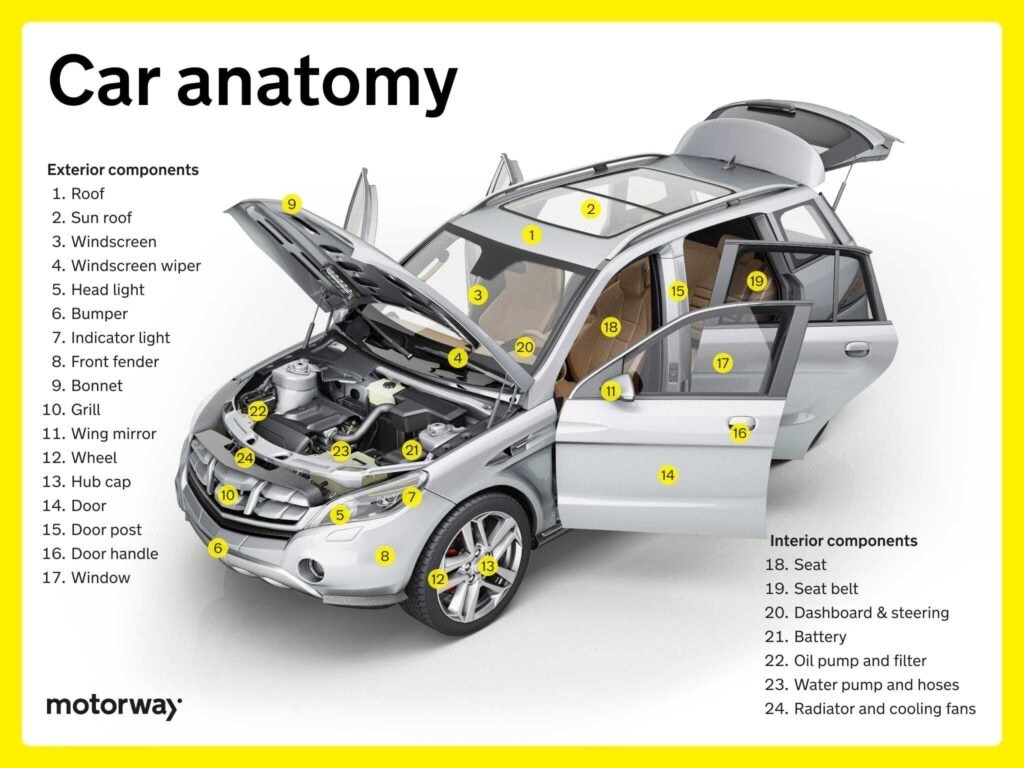
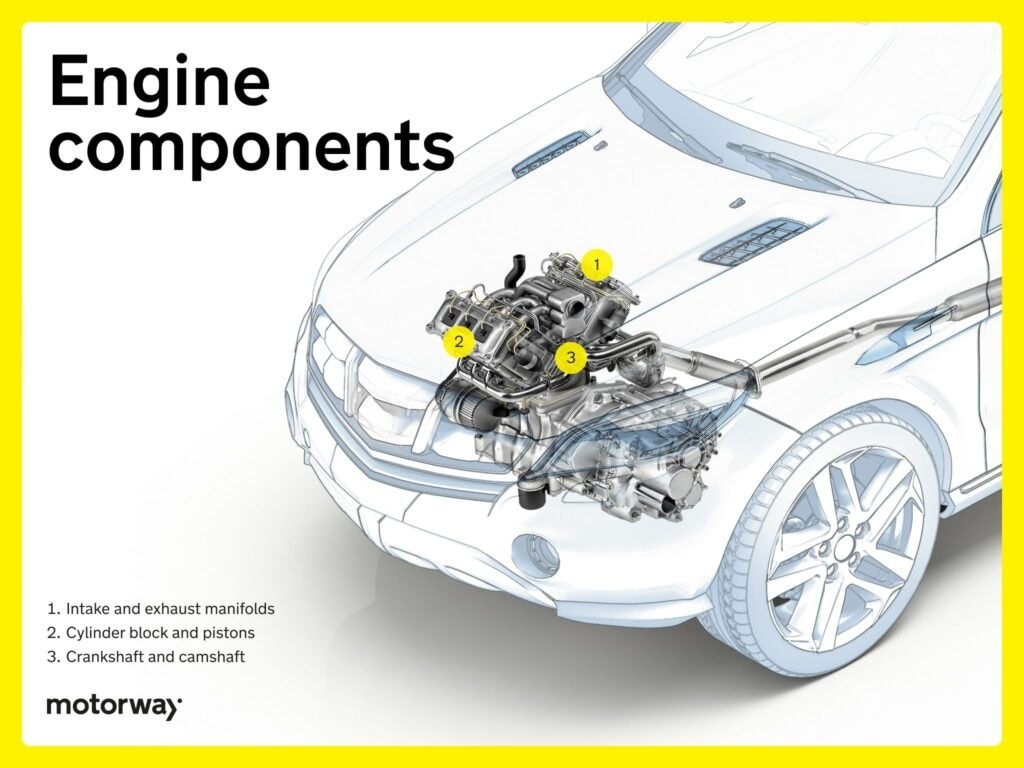
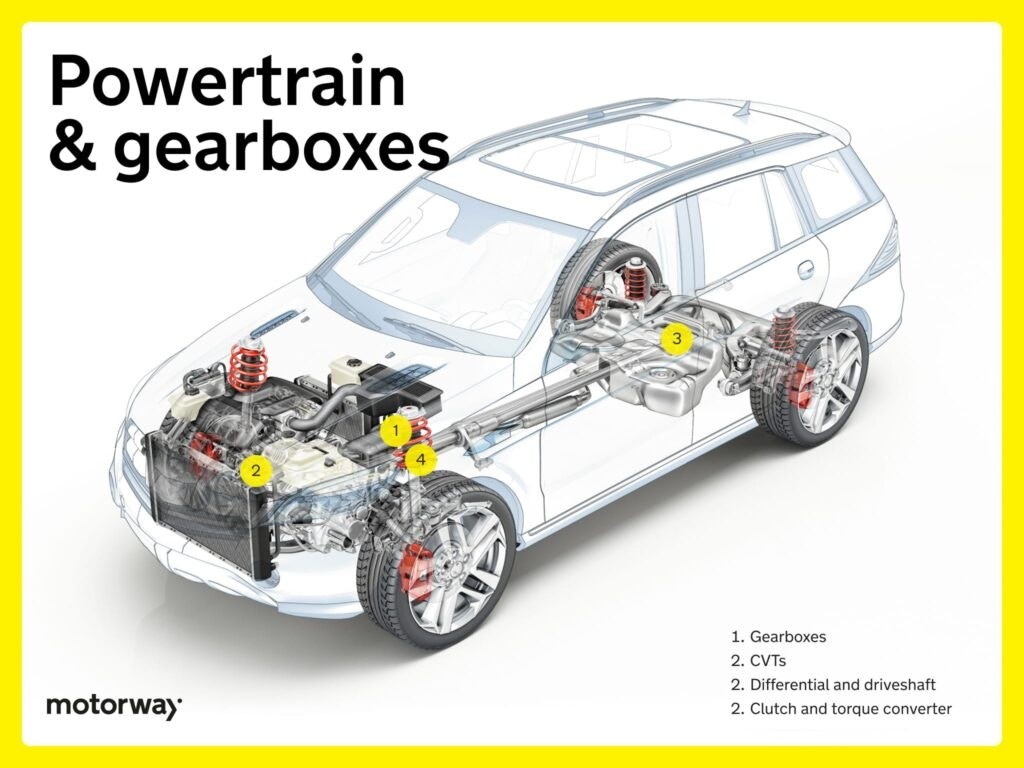
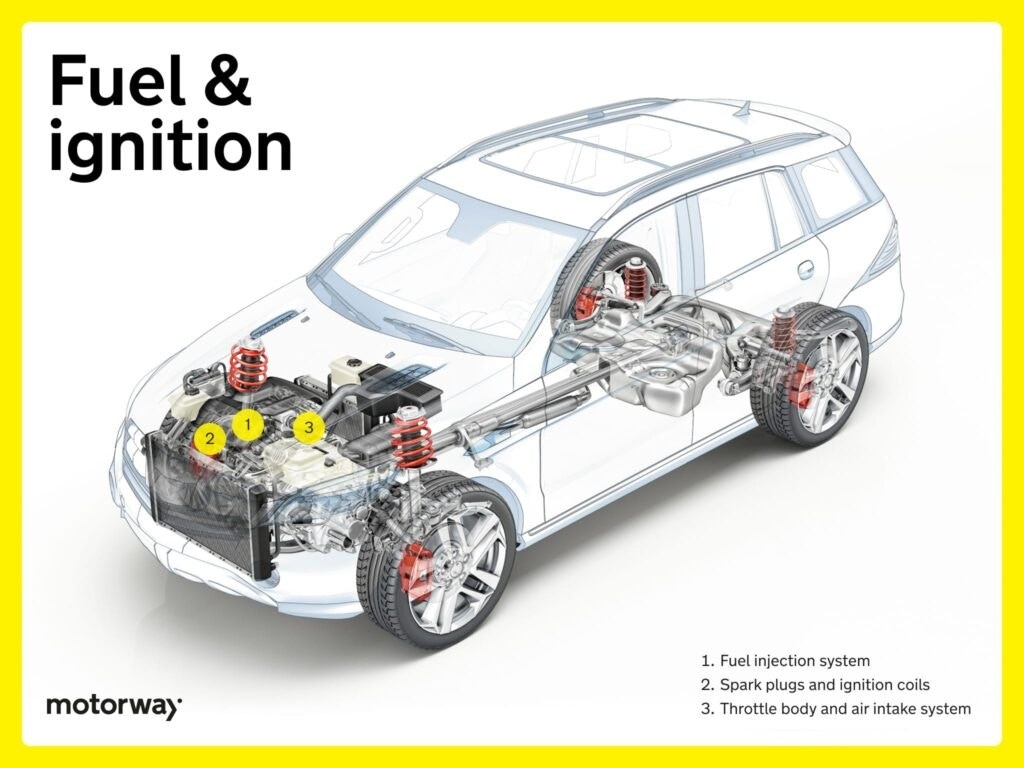
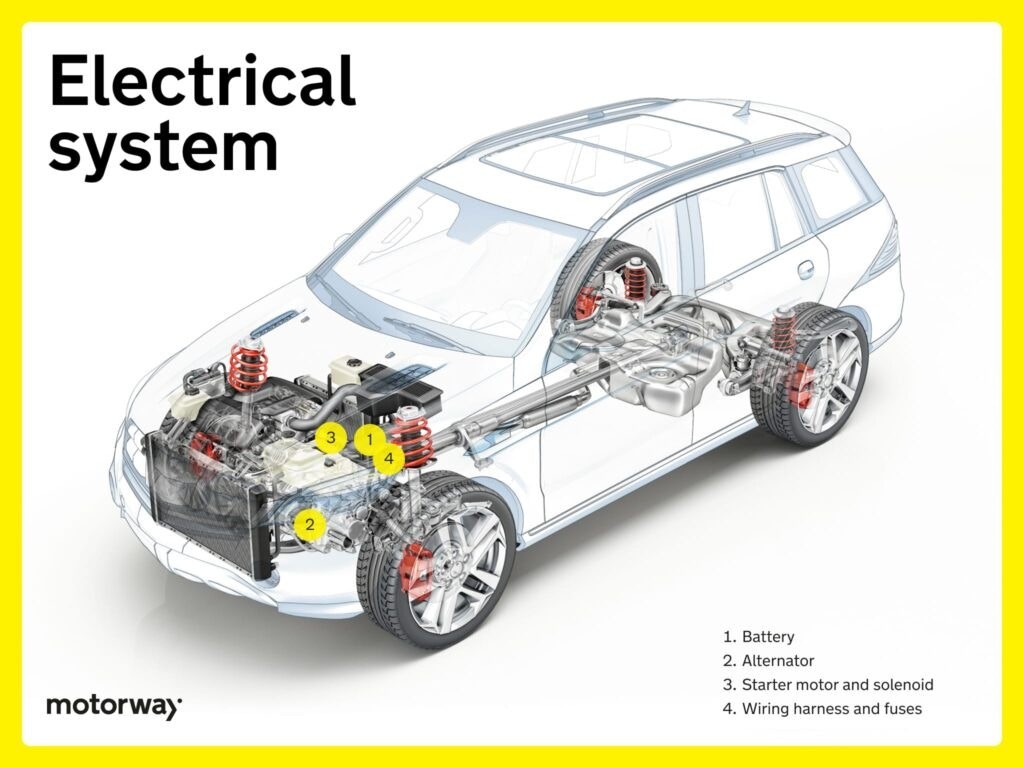
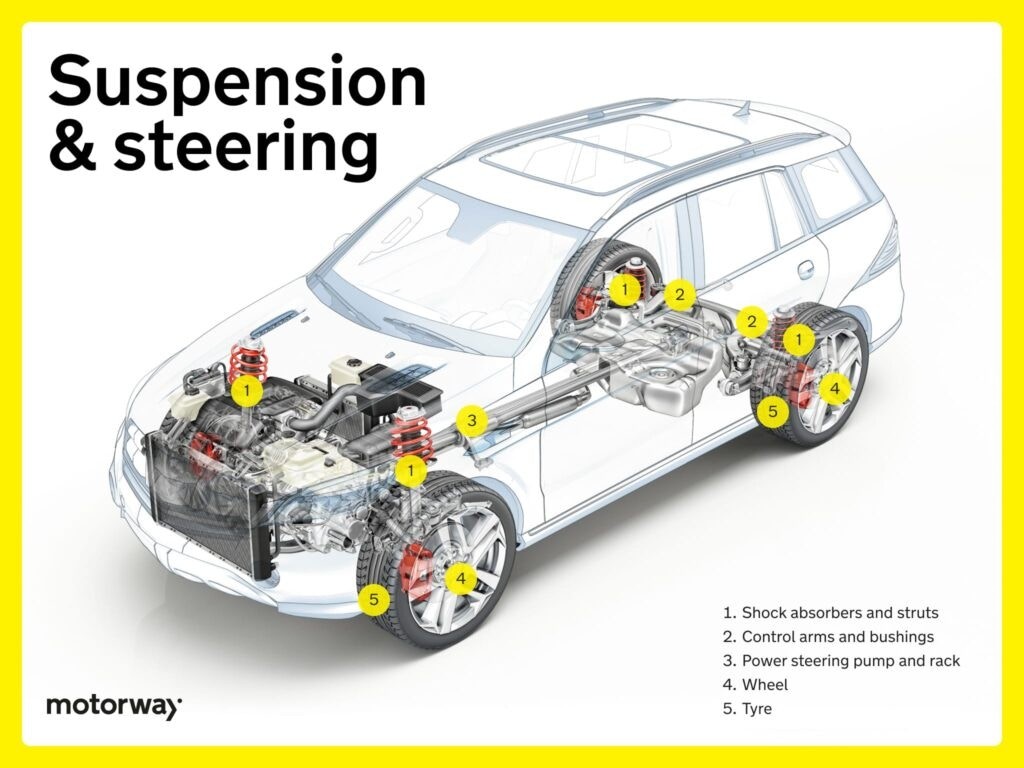
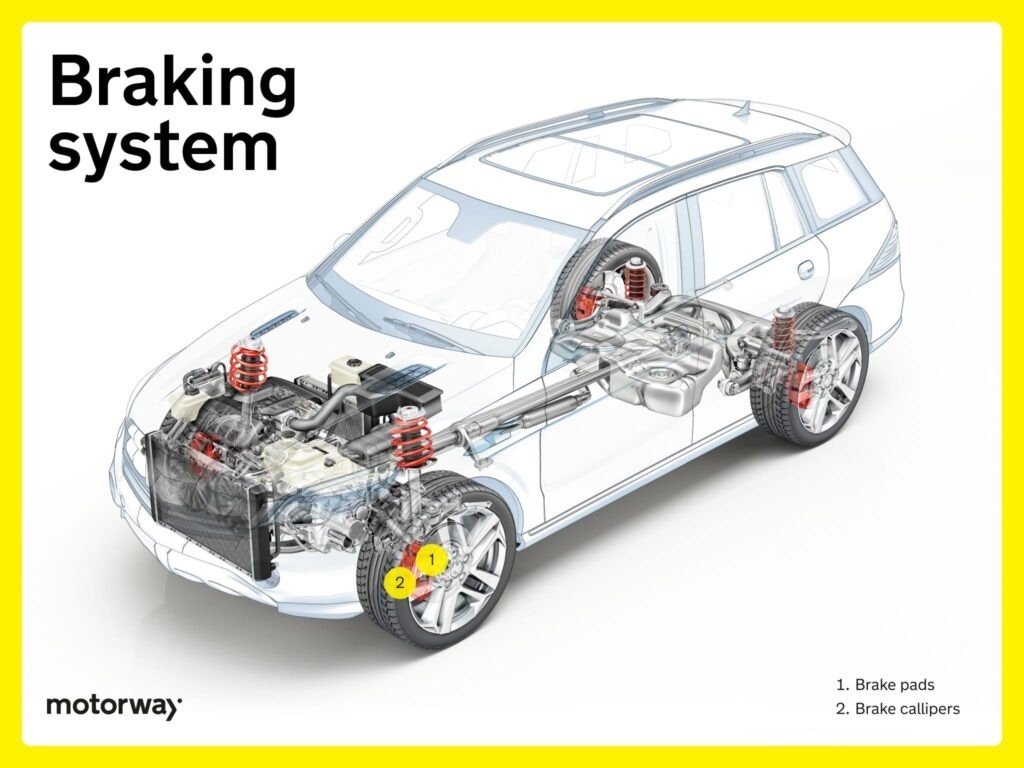
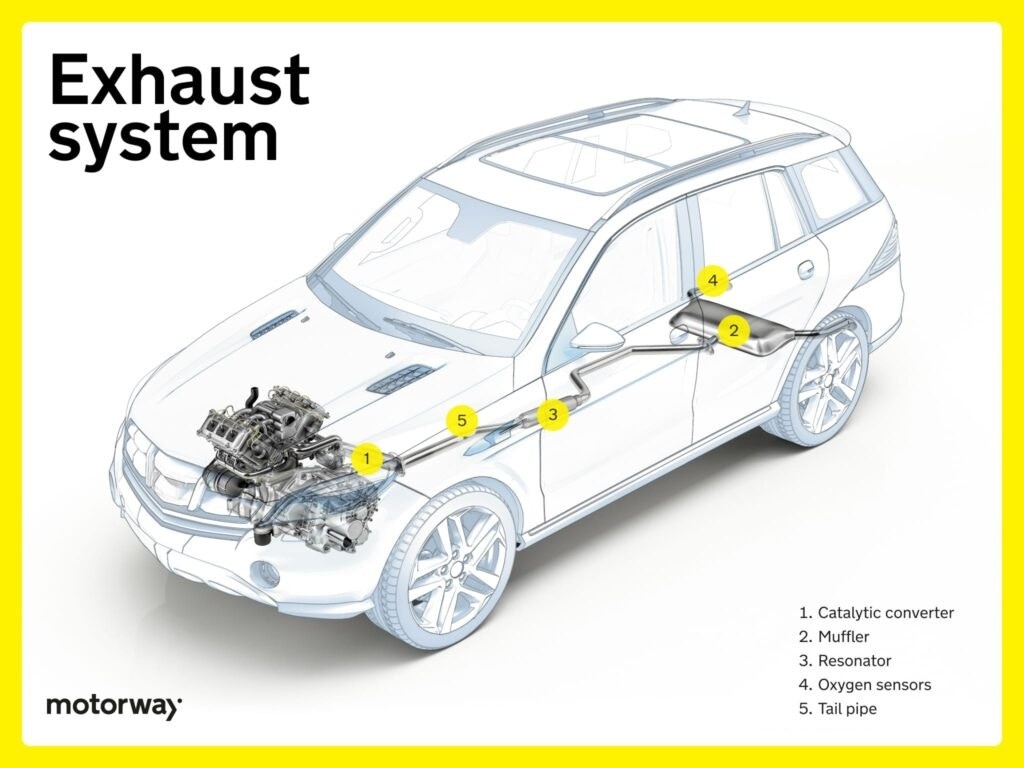
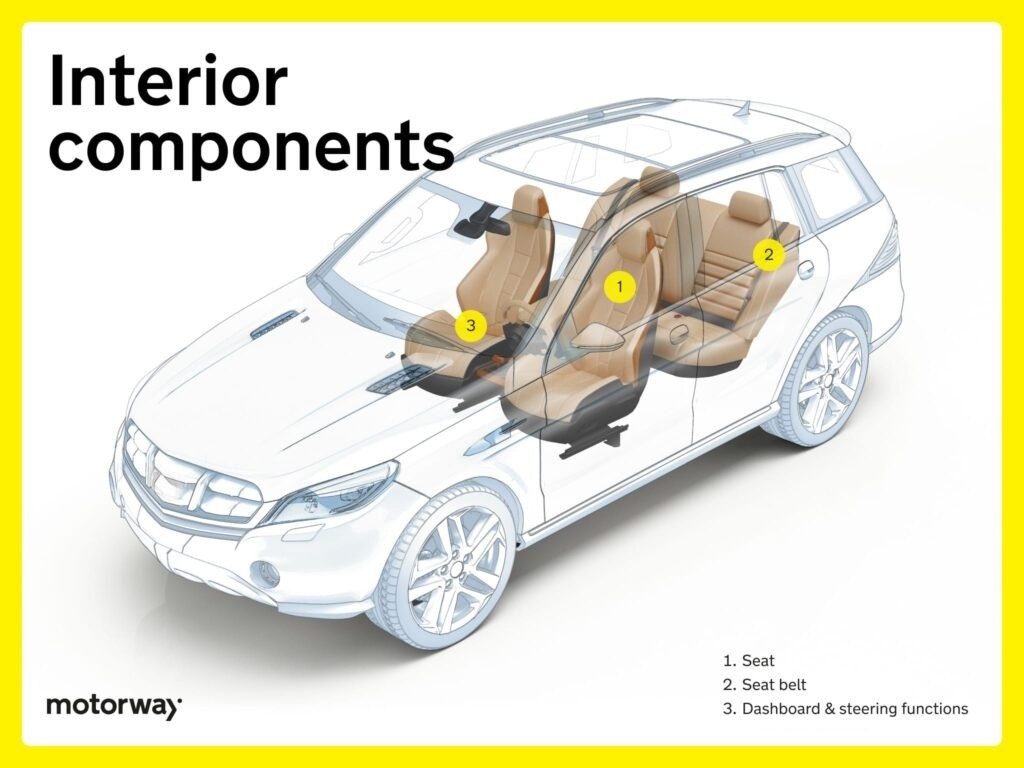
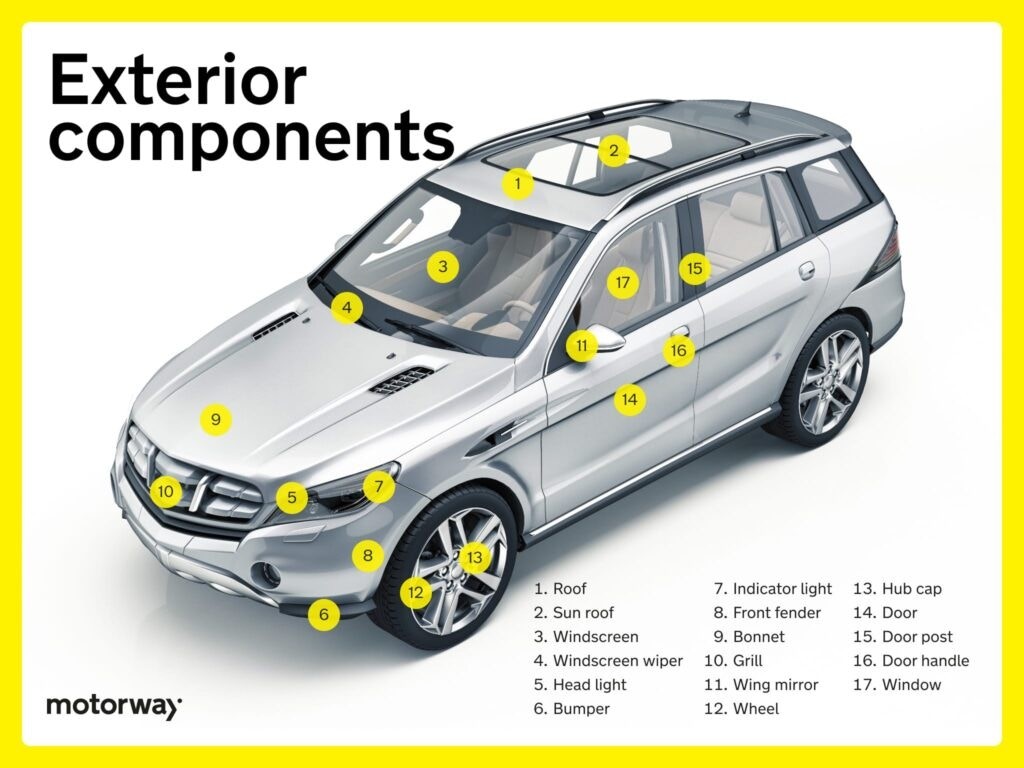
Wheel Construction Guide: Alloy vs. Steel Wheels
Wheel construction varies, impacting weight, durability, and aesthetics:
- One-piece construction: The entire wheel is made from a single piece of material, commonly alloy or steel, offering simplicity and strength.
- Two-piece construction: The wheel consists of two parts – the center and the outer rim, often bolted or welded, found in performance and custom wheels for design flexibility.
- Three-piece construction: The wheel comprises three pieces – center, outer rim, and inner hoop, allowing for extensive customization, popular in aftermarket wheels.
- Forged construction: Wheels made from compressed metal under high pressure, resulting in lighter and stronger wheels used in high-performance and racing applications.
- Multi-piece construction: Wheels combining multiple components for versatility in sizing and customization.
Material choices also impact wheel characteristics:
- Alloy wheels: Made from aluminum or magnesium alloys, lightweight for better heat dissipation and enhanced vehicle appearance.
- Steel wheels: Constructed from steel, robust and durable, cost-effective and suitable for rugged conditions, though heavier than alloy wheels.
Tyre Pressure Monitoring System (TPMS): Safety and Efficiency
The Tyre Pressure Monitoring System (TPMS) is a crucial safety feature. It continuously monitors tyre air pressure using sensors in each tyre. TPMS sensors transmit real-time pressure data to the vehicle’s computer.
If tyre pressure deviates from optimal levels, the TPMS issues warnings to the driver, often via a dashboard light. This promotes safety by alerting drivers to potentially dangerous underinflation, improves fuel efficiency by ensuring tyres are properly inflated, and extends tyre lifespan by preventing premature wear due to incorrect pressure.
FAQs About Car Parts
What parts are under a car?
Beneath a car, you’ll find essential systems including the engine, transmission, suspension, exhaust, and fuel systems. These components work collaboratively to ensure the vehicle functions correctly and performs as intended.
How many car parts are on a car?
Modern vehicles can contain over 30,000 individual parts, reflecting the intricate engineering involved. Electric vehicles typically have fewer parts due to their simpler powertrains, relying on batteries and electric motors rather than complex internal combustion engines.
What are the important parts of a vehicle?
Crucial vehicle parts include the engine, transmission, braking system, steering system, suspension, and electrical components. Each of these systems is vital for ensuring the vehicle’s safe and reliable operation.
What parts of a car can be sold separately?
Individual car components like engines, transmissions, body panels, and specific electrical parts can be sold separately in the aftermarket. This provides options for repairs, replacements, and vehicle upgrades, offering flexibility for car owners.
Why is there a shortage of car parts currently?
Car part shortages can arise from various factors, including supply chain disruptions, increased demand for specific components, manufacturing challenges, and global events impacting production and distribution networks.
Ready to Sell Your Car?
Want to learn more about car ownership, maintenance, and the process of selling your car? Explore our comprehensive guides here, covering topics from Clean Air Zones to car tax and vehicle modifications.
